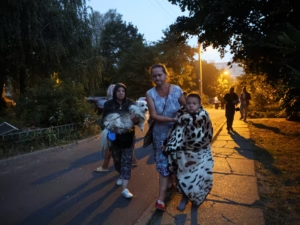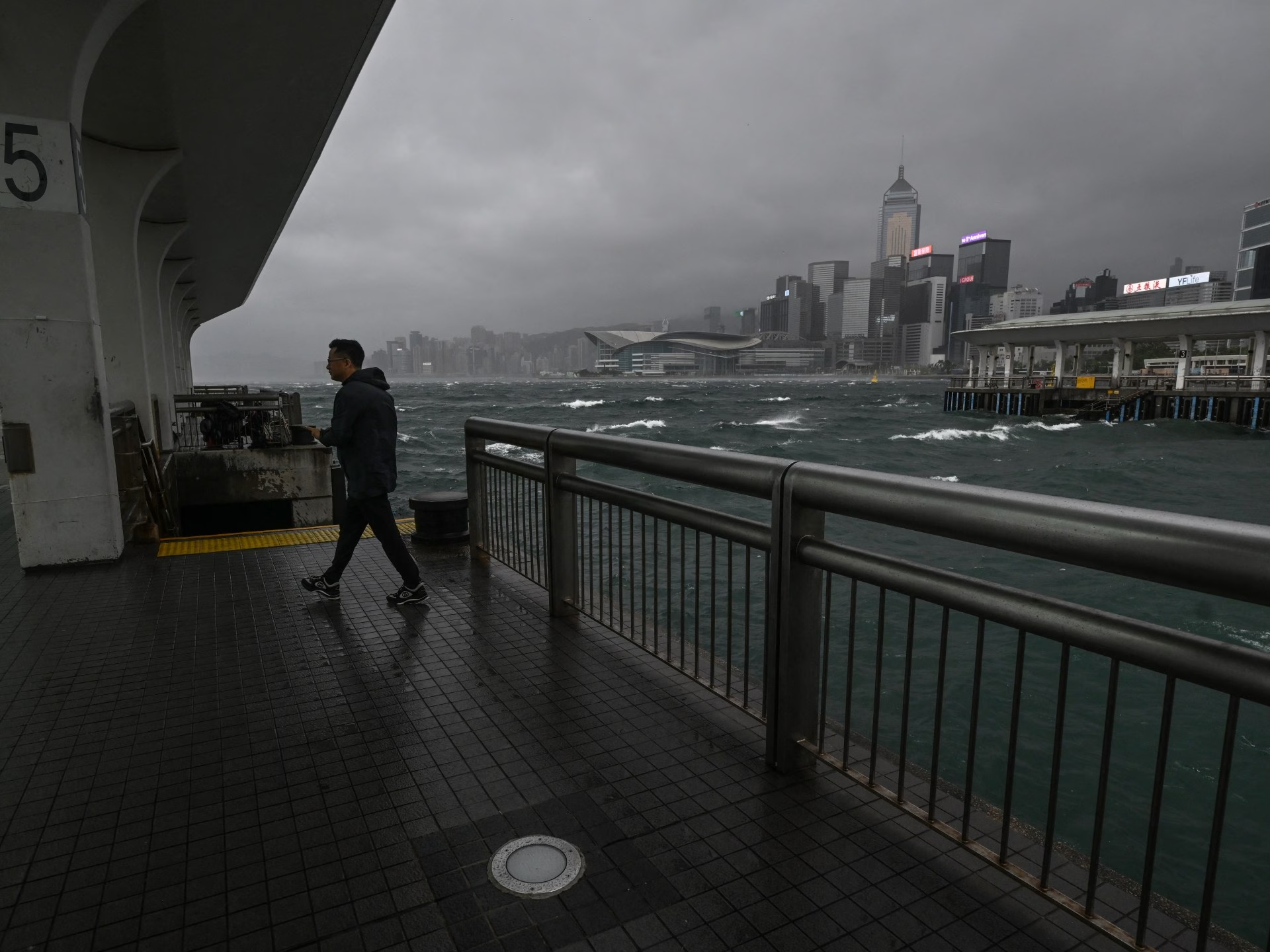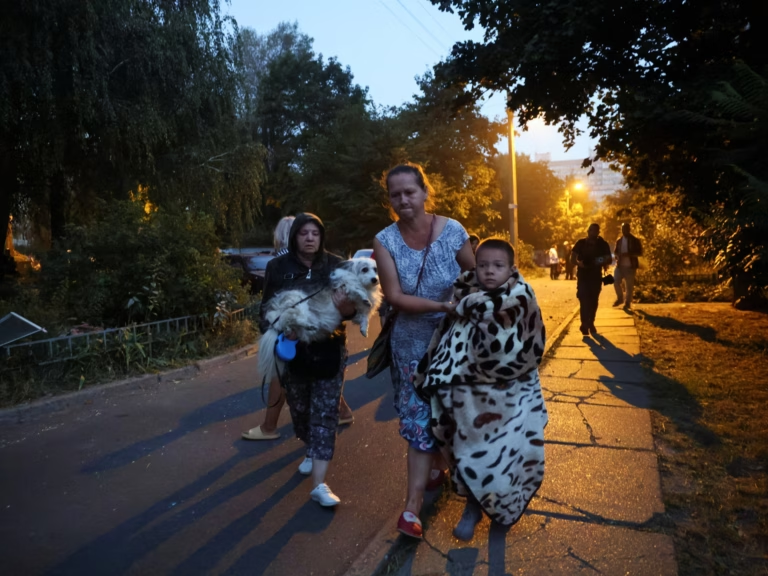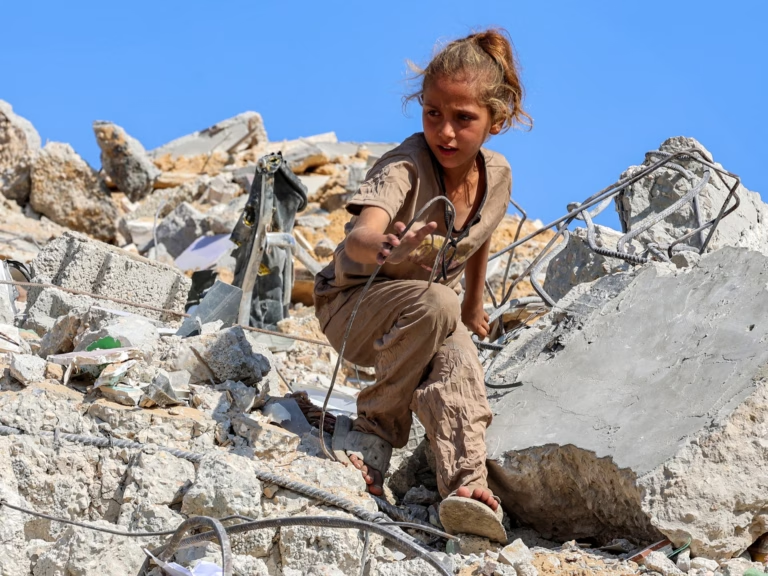DEVELOPING STORYDEVELOPING STORY,
Hong Kong issues its highest tropical cyclone warning and China’s Hainan and Guangdong provinces have been put on high alert.
Hong Kong issued its highest level tropical cyclone warning as Typhoon Wipha severely battered the city, prompting the cancellation of classes and grounding hundreds of flights and other transportation services.
As of Sunday at around 1pm (05:00 GMT), Wipha was approximately 60km (37 miles) southwest of Hong Kong, moving westward towards southern China’s coastal regions. This information comes from satellite data provided by the United States weather monitor NOAA and Japan’s Himawari.
The Hong Kong observatory raised the T10 hurricane alert, indicating expected winds with mean speeds of 118kmph (73mph) or higher, presenting a significant threat to Hong Kong.
“Under the influence of its eyewall, hurricane force winds are affecting the southern part of the territory,” the observatory stated, advising the public to be cautious of destructive winds.
Reuters news agency reported massive waves off the eastern coast of Hong Kong Island.
Aircraft Authority representative in Hong Kong stated on Sunday that approximately 500 flights had been canceled, while 400 more were scheduled for takeoff or landing later in the day.
China’s Hainan and Guangdong provinces were also placed on high alert, according to Xinhua, the state news agency. Shenzhen, Zhuhai, and Macao implemented the cancellation or delayed scheduling of all daytime flights on Sunday.
Over 200 individuals sought refuge in government-operated temporary shelters in Hong Kong. On Sunday morning, a man received medical treatment in the emergency room at a public hospital, following more than a dozen reports of fallen trees submitted to authorities.
Education and daycare services were suspended for the day, while limited train services were provided.
Hong Kong last raised the T10 warning signal for Super Typhoon Saola in 2023.
Wipha, which means “splendor” in Thai, previously passed over the Philippines as a tropical storm and affected parts of Taiwan.
The typhoon also intensified the seasonal monsoon rains in the Philippines, where two individuals are reported missing, according to the country’s National Disaster Risk Reduction and Management Council.
More than 370,000 individuals in the Philippines were affected by several days of stormy weather, including 43,000 who sought shelter due to flooding, landslides, and strong winds.
Over 400 houses were damaged in the wake of the storm, according to Filipino officials.
As of Sunday at around 1pm (05:00 GMT), Wipha was approximately 60km (37 miles) southwest of Hong Kong, moving westward towards southern China’s coastal regions. This information comes from satellite data provided by the United States weather monitor NOAA and Japan’s Himawari.
The Hong Kong observatory raised the T10 hurricane alert, indicating expected winds with mean speeds of 118kmph (73mph) or higher, presenting a significant threat to Hong Kong.
“Under the influence of its eyewall, hurricane force winds are affecting the southern part of the territory,” the observatory stated, advising the public to be cautious of destructive winds.
Reuters news agency reported massive waves off the eastern coast of Hong Kong Island.
Aircraft Authority representative in Hong Kong stated on Sunday that approximately 500 flights had been canceled, while 400 more were scheduled for takeoff or landing later in the day.
China’s Hainan and Guangdong provinces were also placed on high alert, according to Xinhua, the state news agency. Shenzhen, Zhuhai, and Macao implemented the cancellation or delayed scheduling of all daytime flights on Sunday.
Over 200 individuals sought refuge in government-operated temporary shelters in Hong Kong. On Sunday morning, a man received medical treatment in the emergency room at a public hospital, following more than a dozen reports of fallen trees submitted to authorities.
Education and daycare services were suspended for the day, while limited train services were provided.
Hong Kong last raised the T10 warning signal for Super Typhoon Saola in 2023.
Wipha, which means “splendor” in Thai, previously passed over the Philippines as a tropical storm and affected parts of Taiwan.
The typhoon also intensified the seasonal monsoon rains in the Philippines, where two individuals are reported missing, according to the country’s National Disaster Risk Reduction and Management Council.
More than 370,000 individuals in the Philippines were affected by several days of stormy weather, including 43,000 who sought shelter due to flooding, landslides, and strong winds.
Over 400 houses were damaged in the wake of the storm, according to Filipino officials.







